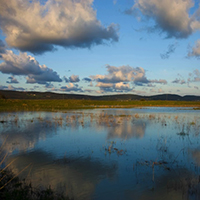The Recent non-marine ostracods of Tunisia: an updated checklist with remarks on their regional distribution patterns and ecological preferences
Non-marine ostracods of Tunisia

Accepted: 11 September 2020
Supplementary: 119
HTML: 42
All claims expressed in this article are solely those of the authors and do not necessarily represent those of their affiliated organizations, or those of the publisher, the editors and the reviewers. Any product that may be evaluated in this article or claim that may be made by its manufacturer is not guaranteed or endorsed by the publisher.
Authors
Different lines of investigation have recently contributed to increasing the available knowledge about the invertebrates inhabiting inland waters of north Africa, but a comprehensive synopsis on Tunisian Ostracoda is missing to date. An updated checklist of Recent non-marine ostracods from Tunisia and data on their distribution is thus offered here, representing the most extensive survey on this crustacean group ever carried out in inland waters throughout the country. One-hundred-five sites covering various climate zones, from Mediterranean to desert areas, were sampled between 2002 and 2012. Most of the considered water bodies were temporary or ephemeral habitats, but a few permanent sites were sampled as well. Overall, 18 genera and 32 taxa of putative species rank were collected in the frame of this survey, among which nine species and five genera were new to Tunisian fauna. As a result of this study and based on previous investigations, nine families (Candonidae, Cyprididae, Cytherideidae, Darwinulidae, Ilyocyprididae, Leptocytheridae, Limnocytheridae, Loxoconchidae, Paradoxostomatidae), 29 genera and at least 45 species of non-marine ostracods are currently known for Tunisia, which thus prove to host the most diverse ostracod fauna among north African countries. The number of species occurring in a single sample varied from 1 to 4. The Eucypris virens complex was the most widespread taxon (58 records), followed by Heterocypris barbara (30 records), Heterocypris incongruens (22 records), and Sarscypridopsis aculeata (16 records). For some ostracod species, clear distributional gradients associated with different climatic conditions were observed. The affinities with adjacent Maghrebian ostracod faunas are discussed. This study confirms the crucial role played by marginal aquatic habitats for the conservation of biodiversity, in particular in arid and semi-arid regions.
Edited by
Diego Fontaneto, CNR IRSA Verbania, ItalyPresent address: Iren Laboratori S.p.A., Piacenza, Italy
How to Cite
Similar Articles
- Oscar RAVERA, Roberto CENCI, Gian Maria BEONE, Marta DANTAS, Paolo LODIGIANI, Trace element concentrations in freshwater mussels and macrophytes as related to those in their environment , Journal of Limnology: Vol. 62 No. 1 (2003)
- Georg A. JANAUER, Is what has been measured of any direct relevance to the success of the macrophyte in its particular environment? , Journal of Limnology: Vol. 60 No. s1 (2001): Scientific and legal aspects of biological monitoring in freshwater
You may also start an advanced similarity search for this article.
-
Francesc Mesquita-Joanes, Giampaolo Rossetti, Claude Meisch
-
Federico Marrone, Fabio Stoch, Souâd Turki, Luigi Naselli-FloresHydrobiologia : 2023
-
Ángel Baltanás, Miguel Ángel Bravo-Utrera, María Luz González-Regalado, Stephani Tasso, Francisco RuizLimnetica : 2024
-
Tadeusz Namiotko, Ferdinand C. de Moor, Helen M. Barber-James, Isa Schön, Koen MartensHydrobiologia : 2023
-
D. C. Rogers, V. Cottarelli, F. MarroneZoodiversity : 2021

 https://doi.org/10.4081/jlimnol.2020.1982
https://doi.org/10.4081/jlimnol.2020.1982





